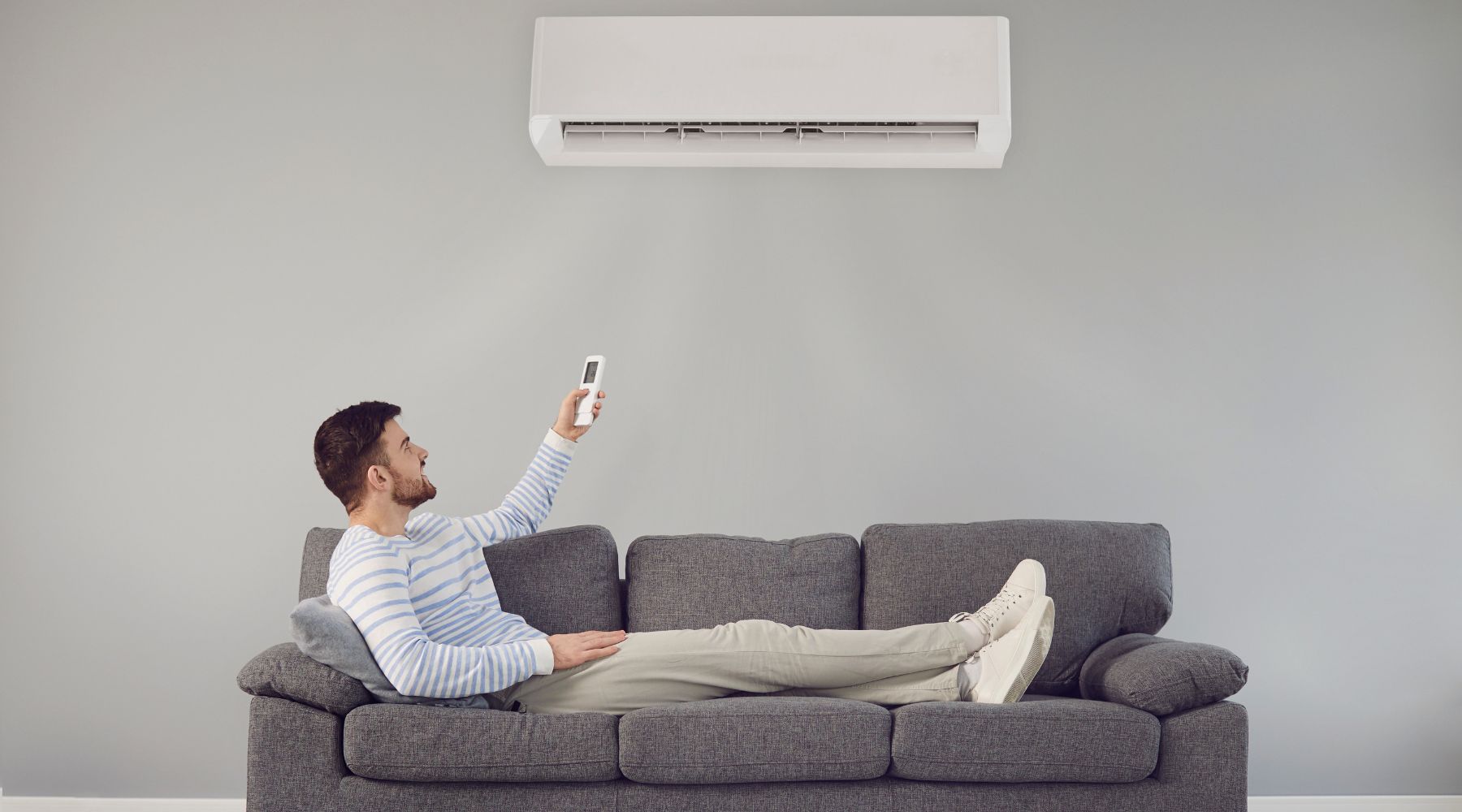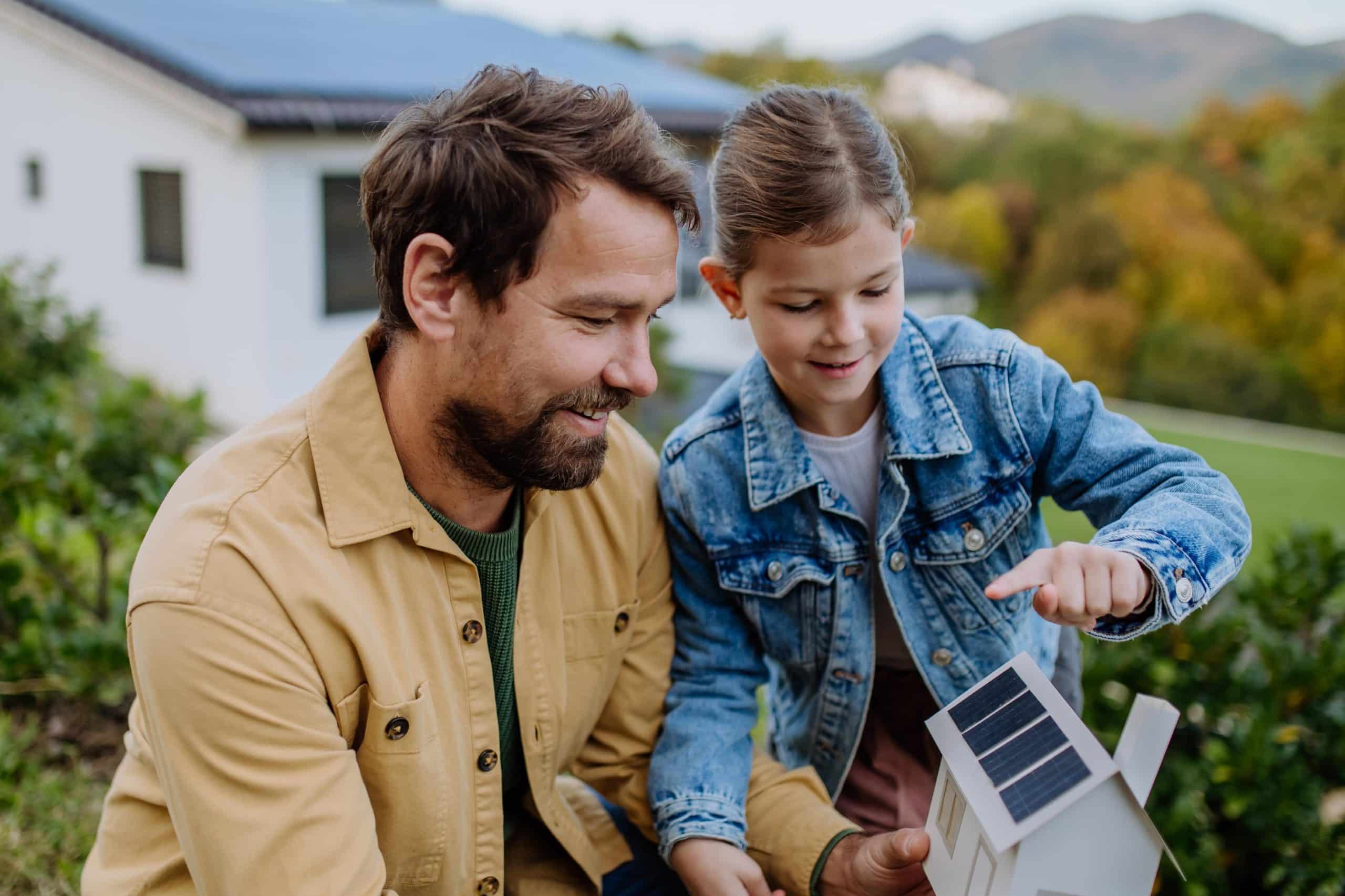It's estimated that more than 75% of all Aussie households have at least one form of air conditioning (A/C) to cool the temperature in the home. However, this figure does vary around Australia, with only 48% of Tasmanians having an A/C unit. South Australians are the most reliant on air conditioning, with an estimated 80% of homes in SA having an air conditioning system.
The average A/C unit is run for around six hours a day in warmer weather, with the average thermostat set at a temperature of around 22 degrees. Cooling our homes makes a major contribution to our energy bills, with around 40% of all domestic retail electricity used to either heat or cool our homes.
Nearly half of all these A/C systems are reverse cycle air conditioners, which means they can both cool and heat air, depending on the time of year. This equates to more than 4.95 million air conditioning systems installed around Australia.
What different types of air conditioners are available?
There’s more than one way to keep cool in summer. These are the various different air conditioning systems available in Australia:
Ducted reverse cycle air conditioning
This type of air conditioning system consists of a large compressor on the outside of the building, plus an internal evaporative unit, which is usually hidden in the attic. There are ducts that channel either warm or cool air to multiple rooms through vents in the ceiling.
With this type of system, you can have various zones in your house, and can choose which of those zones to heat or cool at any point. For example, you can have living areas cooled during the day and bedrooms cooled at night.
Ducted air conditioning is usually reverse cycle, which means one system is used for both heating and cooling air, depending on the time of year. This type of air conditioning system is used for most large public buildings and shopping centres throughout Australia.
Ducted evaporative air conditioning
An evaporative air conditioner sits on the roof of your house. It utilises evaporation to cool air, which is then pumped into the house through ducts. It operates on the principle of passing hot outside air through water-soaked cooling pads. As the air moves through the pads, the water evaporates and absorbs the heat from the air, effectively reducing its temperature. Subsequently, a fan distributes the cooled air throughout the house using a network of ducts. These ducted evap systems can also be zoned to cool different parts of the house on demand. Such roof-top systems are most common in the tropical northern states of Australia, where reverse cycle air conditioning is not as effective.
Split system reverse cycle air conditioners (ductless)
These consist of two units – one mounted on your wall, and the other outside your house. They also both heat and cool. The outside unit is the noisier compressor, while the inside units are quiet, and direct the cool or warm air around the room. It’s possible to have more than one inside unit in different rooms connected by pipes to the outside compressor. Many homes have one wall unit in the main bedroom, and others to heat or cool living areas.
Floor-mounted air conditioners
These systems have an indoor unit designed to sit on the floor, providing convenient cooling for rooms where wall mounting is not feasible or accessible. They are especially suitable for homes with limited wall space or angled walls, or for homes with very high ceilings. The installation of an external unit requires minimal ductwork or preparation. A pipe connects the indoor and outdoor units, facilitating the airflow.
Window air conditioners
Known colloquially as ‘window rattlers,’ these air conditioners used to be a very common choice for controlling the temperature in one small room. They were the first type of air conditioning system in Australia, introduced in the 1950’s. They contain the compressor, condenser, coils and evaporator all in one single unit.
Window air conditioners are designed to fit into the window of a room, so they generally don’t need any significant home modification for installation. Wall units are very similar, except they need a hole made in the room’s wall in order for them to fit. Such units are now generally being replaced with split systems or ducted air conditioners.
Portable air conditioners
Portable air conditioners offer flexibility for users who frequently move between rooms or have a dynamic living arrangement. These units function similarly to window air conditioners. They draw in warm air, cool it, and then circulate the cooled air back into the room. Hot exhaust fumes generated during this process are vented outside through an exhaust hose. The portability of these units allows easy movement to different locations in the home as needed, although these systems can be heavy and difficult to move frequently.
Personal air coolers
These small portable evaporative air-cooling devices are designed to cool the air in a small space. They are inexpensive to buy, but can have higher running costs, and are only effective for small rooms or a one-person office. They work on the evaporation principle and often have a water reservoir that needs to be refilled quite frequently. They do not require any external ducting or pipework and so can easily be moved from room to room.
Which air conditioning system is best?
The best air conditioning system for you depends on various factors, including where you live, the size of your home or area to be cooled, your house design, your budget, and your specific cooling needs. Each type of air conditioning system has its advantages and disadvantages:
Ducted Reverse Cycle Air Conditioners
- Efficient cooling and heating: Reverse cycle systems provide both cooling and heating, making them suitable for year-round use.
- Whole-home comfort: Ducted systems can cool or heat multiple rooms simultaneously, providing consistent comfort throughout the house.
- Aesthetically pleasing: The indoor unit is concealed in the ceiling or floor, leaving only the vents visible, offering a neat appearance.
- High upfront cost: Installation and ductwork can be expensive, making it a significant investment initially.
- Professional installation required: Ducted systems require professional installation and ductwork design to ensure optimal performance.
- High running costs: reverse cycle systems can consume a lot of electricity, meaning that choosing the right electricity plan for your home is vital to keep energy costs down
Ducted Evaporative Air Conditioning
- Energy-efficient: Evaporative cooling uses less energy than traditional air conditioners, reducing electricity costs.
- Environmentally friendly: It uses water as the cooling medium and doesn't rely on refrigerants, making it eco-friendly.
- Fresh air circulation: Evaporative systems continually bring fresh air into the house, promoting better indoor air quality.
- Works best in dry climates: Evaporative cooling is less effective in humid environments.
- Requires ventilation: Windows or doors need to be open to allow air circulation, which may not be ideal for security or allergy concerns.
- Maintenance costs: Regular maintenance is necessary to clean and replace cooling pads to prevent mold and bacteria buildup.
Split System Air Conditioning
- Easy installation: Split systems don't require ductwork, making installation simpler and less invasive than ducted systems.
- Energy-efficient: They can be more efficient than ducted systems because they cool specific areas rather than the entire house.
- Quiet operation: Indoor units are generally quieter than traditional window air conditioners and are easily programmed via a remote control.
- Limited coverage: Split systems are suitable for cooling individual rooms or open-plan spaces, but may not be ideal for whole-home cooling.
- Visible indoor unit: While indoor units are more discreet than window units, they are still visible in the room.
- Costly to run: Split systems can be relatively expensive to run considering they only cool or heat one room at a time.
Floor Mounted Air Conditioning
- Flexible installation: Floor-mounted units can be installed in rooms with limited wall space or where wall mounting is challenging.
- Good airflow distribution: Being closer to the floor allows for better air distribution throughout the room.
- Easy maintenance: These units are very accessible for regular filter cleaning and maintenance, making them highly suitable for people with allergies.
- Take up floor space: The unit occupies floor space, which could be a concern in smaller rooms.
- Visibility: The indoor unit is visible in the room, which may not suit everyone's aesthetics.
- Noise concerns: Some floor mounted air conditioning units can be slightly noisier than split system units.
Window Air Conditioners
- Easy installation: Window units fit directly into the window frame, requiring minimal setup and no professional installer.
- Affordable: They are generally more budget-friendly compared to other air conditioning options.
- Can be moved: Renters can take the window air conditioning system with them when they move.
- Limited cooling area: Window units are suitable for cooling single rooms, but not the entire home.
- Restricted views: They block the window view and natural light when installed.
- Noise concerns: These units have earned the name ‘window rattlers' for their noisy operation.
Portable Air Conditioners
- Portability: Portable units can be moved from room to room as needed, although they are not as easy to move as smaller personal air coolers.
- Easy installation: They don't require permanent installation, making them suitable for renters.
- Convenient one-room solution: Portable air conditioners can provide a convenient solution to cooling just one room.
- Less efficient: Portable units can be less energy-efficient and may have higher running costs for the cool air they provide.
- Venting required: They need an exhaust hose to vent hot air outside, which can limit their portability.
- Need to position near a window: Because these units require an exhaust hose, they need to be positioned near a window.
Personal Air Coolers
- Affordable: Personal air coolers are budget-friendly options for cooling small areas, and can be purchased for under $100.
- Portable: They are small and lightweight, so they are easy to move around from room to room as needed.
- No installation required: These coolers can be purchased and then used instantly with no installation required.
- Limited cooling range: Personal coolers are designed for individual use or small spaces and may not be effective in larger rooms.
- Evaporation limitations: They work best with low-humidity environments and may not be as efficient in high humidity.
- Need to refill water chamber: Some units have a built-in water chamber which needs to be refilled each time the unit is used.
Ultimately, the best air conditioning system for you depends on your cooling needs, your budget, and the specific requirements of your living space. It is possible to reduce the cost of cooling your home by reading air conditioner energy saving tips and taking action to make your cooling system work as efficiently as possible. By making your home more energy efficient, you can enjoy the same level of comfort but use less power and so have lower electricity bills.


